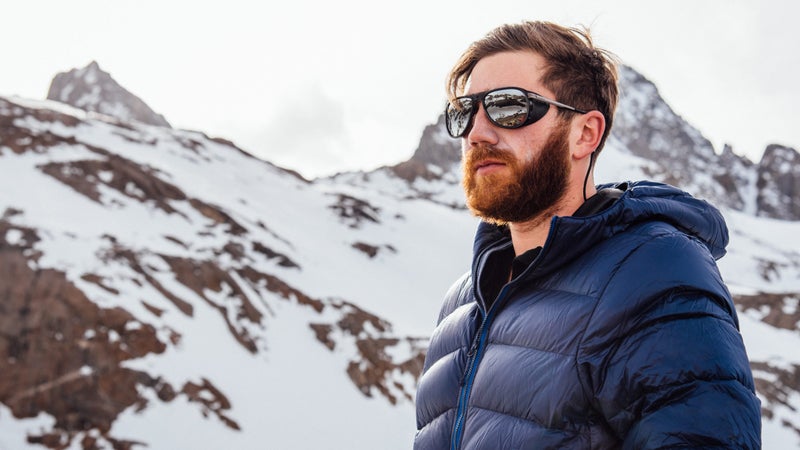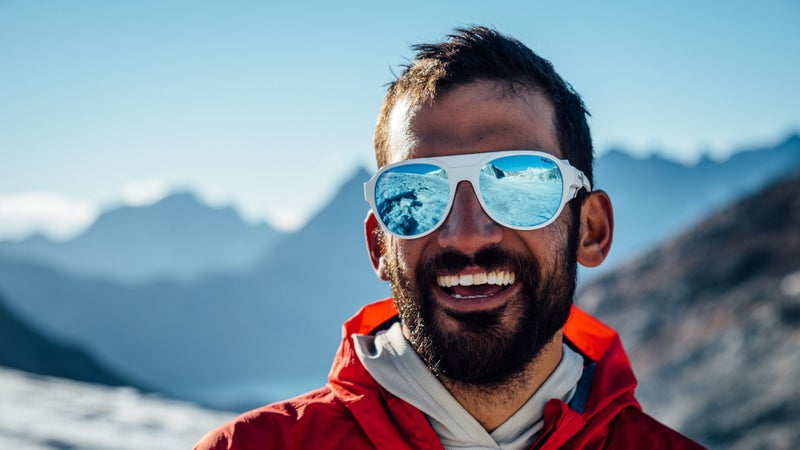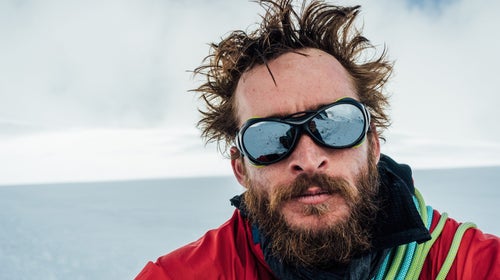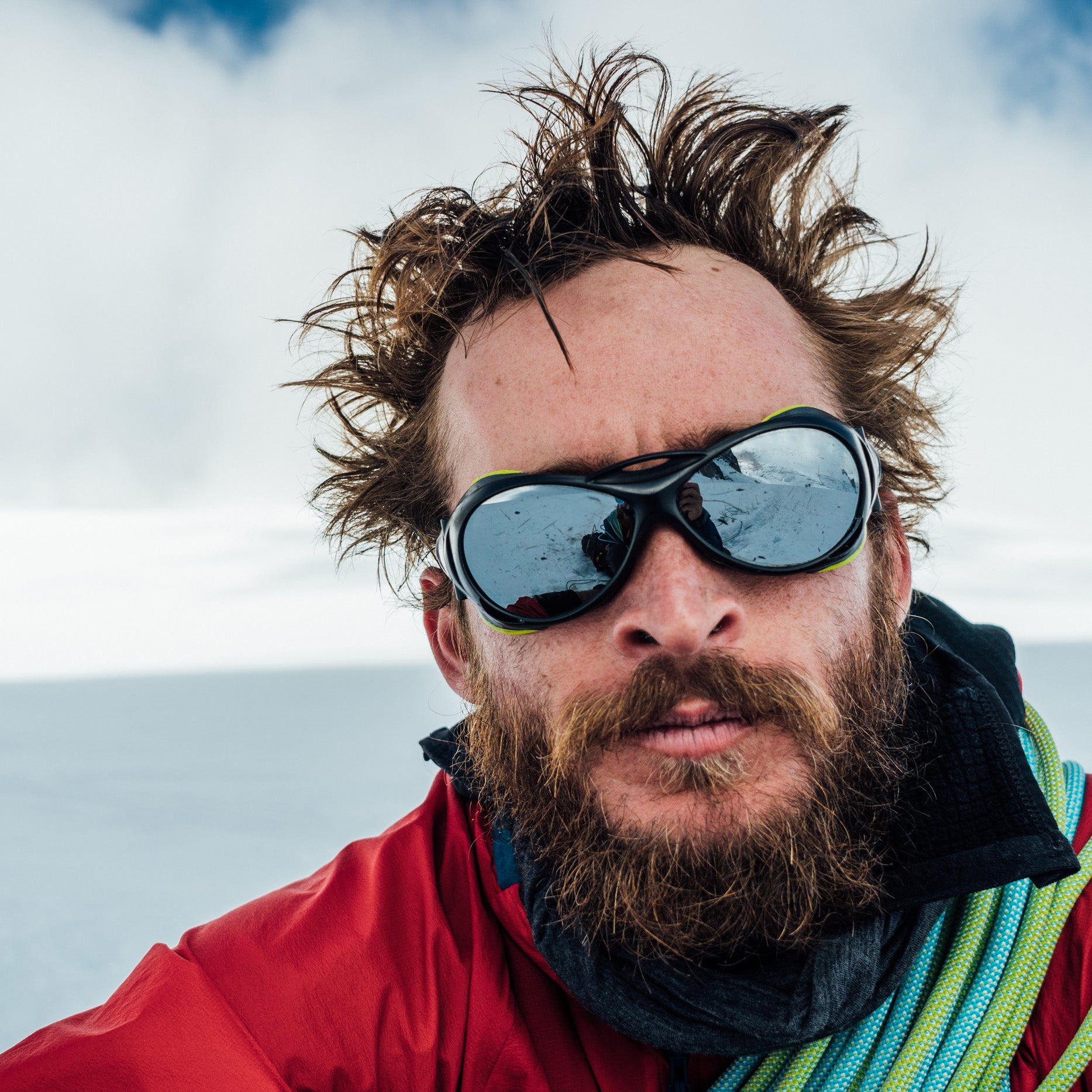For years, serious mountaineers, ice climbers, and glacier travelers had only one place to turn for sunglasses: Julbo. That’s changed with the reintroduction of Vuarnet’s classic Glacier and the launch of high-end Italian brand Revo’s new Traverse range. Feeling the competitive pressure, Julbo has updated its popular Explorer. I tested all these models back-to-back as I climbed in Greenland and later sailed to Antarctica.
Vuarnet Glacier (From $540)

You’ll recognize these French-made items from Everest (Jake Gyllenhaal wore them while lounging shirtless in base camp), Skyfall (Daniel Craig donned a pair for alpine scenes), and the review I put together last year in the High Sierra.
These are some of the coolest-looking sunglasses I’ve ever seen. I feel like a rock star every time I put them on, and, believe it or not, the quality of materials actually feels like it exceeds the expensive $540 price. But here’s the thing: the Glaciers just aren’t that good on the mountain.
While Vuarnet’s scratch-proof, uncoated glass lenses are unequivocally as nice as you can buy—combining maximum protection from the sun’s harmful rays, unparalleled durability, extreme clarity, and delightful color hues—they’re also heavy. Especially when you pair them with the leather side shields required to block glare. At two ounces, they’re twice the weight of the Julbos.
That weight is enough to create discomfort over time, with the glasses literally weighing on the wearer’s nose and ears. More troubling for performance glasses intended for climbing: the weight can cause them to slip off when you look down. The included retention cord needs to be tightly knotted behind your head to ensure the glasses will stay where you want them. That’s a deal breaker on the mountain for me.
Revo Traverse ($269)

This Italian brand is unfamiliar to most Americans, but it’s trying to change that by hiring Jimmy Chin to work as ambassador and art director.
While Revo has been making high-end performance glasses in Italy since 1985, the Traverse is its first foray into the glacier glasses market. On first glance, you might not even realize they were created with alpinism in mind. The lenses, which come in bright red or blue, are a classic aviator shape wrapped in a matte plastic frame. Stylish perforated-leather shields wrap the sides. But unlike the Vuarnets, these Revos perform as great as they look. Rubberized temples and nose pads hold them in place while climbing. The large lenses and leather shields provide as much protection from the sun as the Julbos.
I’ve worn the $269 Traverse while climbing in eastern Greenland and for climbing the Eiger and the Matterhorn. They kept the sun and glare out of my eyes, they’re comfortable, and they don’t fall off.
Julbo Explorer 2 ($130)

Julbo invented glacier glasses by creating special wraparound lenses for mineral hunters climbing Mont Blanc in the 19th century. A hundred years later, the company popularized the design with the introduction of the Vermont. You’ve seen these iconic leather-wrapped round lenses on mountaineers (and rock stars) around the world.
Climbers still wear that time-tested, much-imitated model. But in 2006, Julbo addressed the increasing need for a modern, high-performance option for alpinists working in demanding environments with the release of the original Explorer.
With its large alien lenses, wraparound frame, and removable plastic side shields, the Explorer was an instant hit. Climb any mountain today, and chances are at least a few people in the party will be wearing a pair. But they’re ugly and fog under high exertion, so Julbo addressed those concerns with the Explorer 2.
The new model features updated aesthetics with larger, more swept-back lenses and liberal venting, but these shades are still a dedicated performance option. They work better than either the Vuarnet or Revo, but you won’t want to wear them away from the mountain—the other two still beat these in the looks department.
The Explorer 2 can be purchased with a variety of lens options: The standard Spectron 4 provides protection in extremely bright conditions. The Zebra lenses are antifogging and photochromatic, adapting to changing light conditions. The Camel lenses, which I prefer, are polarized to reduce glare and are fog-resistant and photochromatic.
The first thing you notice while wearing them is the snug, secure, comfortable fit. This is achieved with arms that angle inward at the temples. Rubberized grips extend the entire length of the arms to prevent the frame from sliding off and are also on the nose.
Coverage is superb. The large lenses allow complete peripheral vision, while the large side shields prevent almost all glare from leaking into your eyes. There’s also venting on both the nose and near the temples. Based on my wear tests running around the Antarctic ice, this works well. The Explorer 2 lenses don’t fog during high-output activity.
The Verdict

Which pair should you buy? If you just want to look like a mountaineer, splurge on the Vuarnet Glacier. They’re heavy on the face and the wallet, but their ground-glass lenses are as good as they get, and they look great. If you’re looking for the ultimate in performance, the Julbo Explorer 2 is both the highest-performance style here and, at $130, the cheapest. But if you want to look good while you’re actually climbing, the Revo Traverse glasses work nearly as well for not too much more money. They’re what I’ve been wearing.

